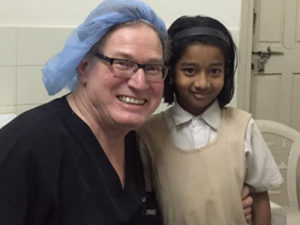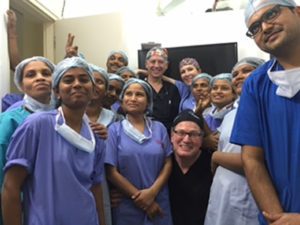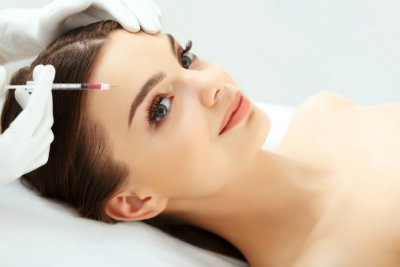- February 2023
- January 2023
- December 2022
- November 2022
- October 2022
- September 2022
- August 2022
- July 2022
- June 2022
- May 2022
- April 2022
- March 2022
- February 2022
- January 2022
- December 2021
- November 2021
- October 2021
- September 2021
- August 2021
- July 2021
- June 2021
- May 2021
- April 2021
- March 2021
- February 2021
- January 2021
- December 2020
- November 2020
- October 2020
- September 2020
- August 2020
- July 2020
- June 2020
- May 2020
- April 2020
- March 2020
- February 2020
- January 2020
- December 2019
- November 2019
- October 2019
- September 2019
- August 2019
- July 2019
- June 2019
- May 2019
- April 2019
- March 2019
- February 2019
- January 2019
- December 2018
- November 2018
- October 2018
- September 2018
- August 2018
- July 2018
- June 2018
- May 2018
- April 2018
- March 2018
- February 2018
- January 2018
- December 2017
- November 2017
- October 2017
- September 2017
- August 2017
- July 2017
- June 2017
- May 2017
- April 2017
- March 2017
- February 2017
- January 2017
- December 2016
- November 2016
- October 2016
- September 2016
- August 2016
- July 2016
- June 2016
- May 2016
- April 2016
- March 2016
- February 2016
- January 2016
- December 2015
- November 2015
- October 2015
- September 2015
- August 2015
- July 2015
- June 2015
- May 2015
- April 2015
- March 2015
- February 2015
- January 2015
- December 2014
- November 2014
- October 2014
- September 2014
- August 2014
- July 2014
- June 2014
- May 2014
- April 2014
- March 2014
- August 2013
- July 2013
- June 2013
- May 2013
- April 2013
- March 2013
- February 2013
- January 2013
- December 2012
- November 2012
- October 2012
- September 2012
- August 2012
- July 2012
- June 2012
- May 2012
- April 2012
- March 2012
- February 2012
- January 2012
- December 2011
- November 2011
- September 2011
- January 2011
- December 2010
- November 2010
- September 2010
- August 2010
- May 2010
- December 2009
Archive for September, 2022
Are you considering a buttock lift? Here’s what you need to know!
 If you wish you had a curvier figure or you aren’t happy because you feel like your buttocks are saggy and flabby, a buttock and outer-thigh lift may be the answer for you! Read on for more information about this procedure!
If you wish you had a curvier figure or you aren’t happy because you feel like your buttocks are saggy and flabby, a buttock and outer-thigh lift may be the answer for you! Read on for more information about this procedure!
Is a buttock and outer-thigh lift right for you?
The ideal candidates for this procedure are those who have excess skin and tissue on the thighs and buttocks. You should be in good overall health, a nonsmoker, and you should not be significantly overweight. And, as with any cosmetic procedure, you should have realistic expectations about the outcome of your surgery.
What happens during a buttock and outer-thigh lift?
It is a sad fact of life that as we age, our bodies change. Our buttocks and thighs can start to look saggy, or your buttocks may start to look flat. A buttock and outer-thigh lift can help, by improving the shape and size of the buttocks and thighs and making them look toned and contoured.
These are actually two separate procedures, but they are often performed at the same time because issues with the buttocks and the thighs often overlap (of course, your doctor will discuss your options with you, which will depend on the results you’d like to see). This procedure is done on an outpatient basis under general anesthesia.
What happens after the procedure?
You may feel bruised, swollen, and sore for up to a month after the procedure. You may be given prescription medication to control any pain. Most patients will go back to work and regular activities about 2 weeks after the surgery, although strenuous activity should be avoided for at least a month. You may be advised to wear compression garments to help with any swelling and to help you heal. The results of your procedure will last for years, unless you have a significant weight gain or loss.
A buttock and outer-thigh lift procedure can help to give you the toned and contoured figure you want! If you would like a consultation to see if this procedure might be right for you, contact the Weinstein Plastic Surgery Center! Call the office in Chester, New Jersey, at (908) 879-2222 today!
Posted in Uncategorized on September 15th, 2022
Plastic Surgeon Larry Weinstein ’75 Restores Hope, Renews Lives in Underserved India
 Larry Weinstein ’75 considers himself hyper-vigilant—a quality that has served him well in 30 years of practicing medicine.
Larry Weinstein ’75 considers himself hyper-vigilant—a quality that has served him well in 30 years of practicing medicine.
As a pre-med student majoring in psychology, he was keenly aware of his surroundings at all times. “Personal safety and community awareness are important to me,” says the renowned plastic surgeon, speaking by phone from his office in Chester, New Jersey. “At Syracuse, I was a member of the University Senate, and paid close attention to drug and alcohol abuse. Still do. I like to know where everybody is, especially my friends, and that they are OK.”
Weinstein’s concern for others is apparent in his private practice, in which he has treated more than 30,000 patients, and in underserved communities in India, where he has performed thousands of surgeries, free of charge.
Such compassion has yielded a string of accolades, including the prestigious In Chul Song Award for Philanthropic Service from the American Society for Aesthetic Plastic Surgery. No surprise that Castle Connolly Medical, publisher of the acclaimed “Top Doctors” book series, has recognized Weinstein nationally and regionally every year for the past decade. He also is honored to be included in Inside Jersey magazine’s annual roundup of the state’s Top Doctors.
Nevertheless, people are surprised to learn that Weinstein did not go to an American medical school. An ongoing interest in Spanish, which began at P.S. 208, The Elsa Ebeling School, in Brooklyn and continued at Syracuse, eventually took him south of the border.
“I think I got the highest grade possible on my final exam for ‘Organic Chemistry II,’ which was one of Syracuse’s most difficult pre-med courses,” says the Brooklyn native. “Although I probably would have liked to have gone to med school in the United States, I was fortunate for the opportunity to immerse myself in Spanish.”
After graduation, Weinstein made his way to western Mexico, where he enrolled in the School of Medicine at the University of Guadalajara—the oldest private medical school and the oldest private university, respectively, in the country. By dint of hard work and perseverance, he earned an M.D. in 1979. That all of his coursework, including labs and lectures, was in Spanish only adds to the significance of this feat.
Upon returning to the United States, Weinstein embarked on a series of residencies throughout the Northeast, including ones at the Memorial Sloan Kettering Cancer Center and Columbia University Medical Center. It was during rigorous plastic surgery training at the SUNY Downstate Medical Center that he befriended Sharad Kumar Dicksheet, an Indian-born, American plastic surgeon. As founder of The India Project, Dicksheet organized pro bono surgical missions to India. His impact on Weinstein was swift and intense.
“[Dicksheet] literally wouldn’t stop to eat or go to the bathroom when performing surgeries,” Weinstein says of his mentor, who was wheelchair-bound and did not have a larynx. “It is estimated that he performed more than 100,000 free surgeries in India before his death [in 2011]. He was nominated for the Nobel Peace Prize six times.”
In 1988, Weinstein opened a private practice in Chester Woods Professional Park, situated among the green, rolling hills of historic Chester. His warm, affable personality, combined with a skilled, conservative approach to treatment, has made his practice a leader in cosmetic, plastic and reconstructive surgery.
While Weinstein has garnered a cult-like following throughout the Tri-State Area, he has a larger fan-base in India, which he has visited 15 times since 1993. Most of his trips are several weeks long, and take place in large, sprawling cities, such as Pune and Nagpur, where public health care is overburdened or virtually nonexistent.
 At first, Weinstein treated only a few hundred people per visit. He eventually brought along two other plastic surgeons and a half dozen surgical specialists to boost capacity. During his latest trip, Weinstein saw more than 870 people in one week. (“We worked from nine in the morning to nine at night, and didn’t take breaks, except for the occasional cup of chai tea,” he says.) Most of his patients were children with facial defects, caused by genetic problems, environmental issues or lack of proper nutrition during pregnancy.
At first, Weinstein treated only a few hundred people per visit. He eventually brought along two other plastic surgeons and a half dozen surgical specialists to boost capacity. During his latest trip, Weinstein saw more than 870 people in one week. (“We worked from nine in the morning to nine at night, and didn’t take breaks, except for the occasional cup of chai tea,” he says.) Most of his patients were children with facial defects, caused by genetic problems, environmental issues or lack of proper nutrition during pregnancy.
“These kids often are ostracized from their communities, and cannot attend school, hold down a job or get married,” Weinstein says, adding that iron deficiency, anemia and infections account for many of the deformities. “We fix a lot of bilateral and unilateral clefts because the Indian healthcare system is overburdened with acute injury problems, which take priority over congenital cleft-lip treatments. We also open eyelids, mend deformed ears and smooth scars and burns.”
Weinstein recalls a trip to Hubballi, a large industrial city in southern India, where he treated a boy with a cleft lip. Two years later, his parents came to see Weinstein, and presented him with a school photo of their son. “He looked so handsome. I shared his photos with my colleagues,” he beams.
One thing Weinstein has learned is that plastic surgery is not always about vanity. In fact, the many breast augmentations, tummy tucks and facelifts he performs allow him to donate his time to helping India’s impoverished communities.
Congenital problems (e.g., cleft lips and palates), burns, hand injuries and cancer-causing defects may represent the less glamorous side of Weinstein’s work, but he considers them vitally important. He also knows they require the special atraumatic techniques of a plastic surgeon.
“You’d be amazed at how many patients, especially older ones, are stigmatized or ignored by society,” says Weinstein, who, in his quest for beauty, also is an avid gardener. “It’s gratifying to make someone feel youthful or sexy again.”
Weinstein explains how people in the West sometimes drop tens of thousands of dollars on “magical machine treatments” to make themselves look younger, but then realize that the only magic involved was the disappearance of their money.
He is particularly proud of his gentle, rejuvenative procedures that remove jowls, restore necklines and instill confidence.
“A facelift with SMAS [superficial muscular aponeurotic system, which is an area of musculature of the face] in the hands of a skilled surgeon can help restore a more natural-looking, youthful appearance,” says Weinstein, who has performed face-lifts on men and women from North Carolina and New Jersey to England, the Ukraine and Russia.
Weinstein credits the College of Arts and Sciences for instilling in him the virtues of hard work and good citizenship. He also learned how to collect, analyze and interpret data—skills that prepared him for medical school, and have come in handy throughout his career. It was in the Department of Psychology that Weinstein was exposed to the work of B.F. Skinner, whose theory of operant conditioning (in which behavior is controlled by consequences) fired his imagination. “Syracuse helped me develop my research and analytical skills. It showed me the importance of scientific literacy, regardless of one’s career path,” Weinstein says.
He also is proud of his recent induction into James Madison High School’s “Wall of Distinction,” which includes Supreme Court Justice Ruth Bader Ginsburg, presidential candidate Bernie Sanders and New York Senator Chuck Schumer.
“I was not a straight ‘A’ student, but I’ve worked hard,” Weinstein adds. “I also have surrounded myself with good people, who have inspired me. It’s my turn to give back.”
Posted in Uncategorized on December 11th, 2020
Do I need a breast augmentation or lift?
 There are many reasons why women may be unhappy with their breasts, which is why breast enhancement surgery is the most popular cosmetic surgery procedure. Pregnancy, weight loss, aging, hormones and development can affect the size and shape of the breasts. During your consultation with Dr. Weinstein, you will discuss your options for breast enhancement, which include breast augmentation, breast lift or both. Read on to learn more about the differences between the two surgical procedures.
There are many reasons why women may be unhappy with their breasts, which is why breast enhancement surgery is the most popular cosmetic surgery procedure. Pregnancy, weight loss, aging, hormones and development can affect the size and shape of the breasts. During your consultation with Dr. Weinstein, you will discuss your options for breast enhancement, which include breast augmentation, breast lift or both. Read on to learn more about the differences between the two surgical procedures.
Breast augmentation
More than 300,000 people in the United States undergo breast augmentation each year. This popular surgery addresses the size and shape of the breasts. There are a variety of reasons why women want to have this surgery done. Women who have experienced pregnancy or weight fluctuations may notice loss volume. Some women have abnormally small or underdeveloped breasts, while others have elongated breasts or breasts that are different sizes. Some women seek this surgery after having previous breast surgery.
During your initial consultation, Dr. Weinstein will go over the different surgical techniques best suited for you based on your breast anatomy and concerns. This includes the placement of the incision and implant type, size and shape. While saline implants are an option, most patients opt for silicone implants as the silicone gel feels most like natural breast tissue. The newest option is gummy bear implants, which are silicone gel implants with higher viscosity.
Breast lift
While breast augmentation addresses the size and shape of the breasts, a breast lift will reshape and raise sagging breasts. Also known as mastopexy, a breast lift consists of removing excess skin and tightening breast tissue to create a more youthful contour. Often, women choose to have a breast lift with breast augmentation to increase the breasts’ size and firmness and correct any imbalance in shape.
During your initial consultation, Dr. Weinstein will discuss the various incision patterns and techniques and make recommendations for you based on your age, skin elasticity, size and shape of your breasts and whether implants will be involved.
If you’re interested in changing the size and shape of your breasts or reshape and raise sagging breasts, call our office today at (908) 879-2222 to schedule a breast enhancement consultation with Dr. Weinstein.
Posted in Uncategorized on September 30th, 2020
What causes carpal tunnel syndrome?
 If you’ve noticed tingling, numbness or dull ache in your fingers or weakness in your hand and you’ve started dropping things, you may be experiencing what’s known as carpal tunnel syndrome. You will want to see your doctor early, before it begins to interfere with regular activities or before the condition progresses and you have permanent nerve and muscle damage. Here we’re sharing the signs and symptoms and what you need to know about carpal tunnel syndrome.
If you’ve noticed tingling, numbness or dull ache in your fingers or weakness in your hand and you’ve started dropping things, you may be experiencing what’s known as carpal tunnel syndrome. You will want to see your doctor early, before it begins to interfere with regular activities or before the condition progresses and you have permanent nerve and muscle damage. Here we’re sharing the signs and symptoms and what you need to know about carpal tunnel syndrome.
What is carpal tunnel syndrome?
The carpal tunnel is a narrow passageway surrounded by bones and ligaments that are on the palm side of your hand. Carpal tunnel syndrome is caused by pressure on the median nerve, which provides sensation to the palm side of your hand, except the little finger. Patients report feeling numbness, tingling and weakness in the affected hand and arm.
What are the symptoms?
Symptoms start gradually, but you’ll first notice the tingling and numbness in your fingers and hand, usually the thumb and index. Some describe the sensation as “pins and needles feeling” or an electric shock that may travel from your wrist up to your arm. You may also experience weakness in your hand and find yourself dropping objects because of it. The thumb’s pinching muscles are controlled by the median nerve, and when there’s pressure on that nerve, the muscle loses control.
What causes it?
Often there is no single cause of carpal tunnel syndrome. Any or all of the following may be a contributing factor: wrist fracture; swelling and inflammation caused by rheumatoid arthritis or another bone or joint disease; hormonal or metabolic changes such as pregnancy or menopause; and frequent, repetitive movements such as typing or grasping movements such as with certain physical activities.
Treatment for carpal tunnel syndrome can relieve the symptoms and restore wrist and hand function. If you are experiencing the symptoms of this syndrome and are interested in learning your treatment options, contact our office today at (908) 879-2222 to schedule a consultation with Dr. Weinstein.
Posted in Uncategorized on June 15th, 2020
Enhanced Facelift Rhytidectomy with SMAS
Larry Weinstein, MD FACS, Chief Plastic Surgery, Chester Surgery Center, USA
Abstract
A retrospective review of 218 patients had rhytidectomy with SMAS . Average age 55 over 18 years range of 43 to 83. From 1992 to 2004 average age was 49, In 2017, average age 62. 60 % of patients are done under local with conscious sedation, 40 % under general anesthesia. Patients take Valium 10mg, Emend a long acting antinausea medication and an antibiotic orally with a sip of water 1 hour prior to procedure. 0.5% lidocaine with epi injected to incision lines and fatty areas. 10 minutes elapses while a TCA peel, filler and/or Botox are administered. Skin painted betadine, the hair and ears are soaked with Betadine. Hair is slicked back with Bacitracin ointment . The angle of the head rest is raised to an acute angle to flex the neck as much as possible. Orbicularis oris muscle fascia is grasped with a forceps and a 3-0 ethibond is placed as a suspension suture to the anterior SMAS. Platysma muscle is suspended to the mastoid fascia with a 3-0 Ethibond suture. A 2-0 PDO Quill is placed over the 3-0 Ethibonds and SMAS to bury the Ethibond suture. Any irregularities are trimmed . 3-0 Monocryl subcuticular. Bacitracin is applied to the wounds, gauze and Kerlex Barton’s dressing. Results: There was no postoperative nausea or vomiting. Tylenol postoperatively PRN. Patients had Tylenol PM at night and 5mg Valium for anxiety or tightness. Two small hematomas evacuated with a syringe during a postoperative visit. A seroma over the parotid gland required syringe aspirations till resolved. 3 pixie ears were noted with long term follow up. All patients with conscious sedation reported an excellent operative experience on a post-procedure questionnaire. Conclusion: Emend may help prevent postoperative nausea and vomiting. The 2-0 PDO quill may help SMAS elevation and prevent exposure of permanent Ethibond suture. Elevating the head rest can help elevate the SMAS and skin under no tension intraoperatively .
Biography
LARRY P. WEINSTEIN, M.D., FACS Diplomat American Board Plastic Surgery , Fellow American College Surgeons , SUNY(Brooklyn) Plastic Surgery Clinical Instructor. Attending Plastic Surgeon Morristown Medical Center. Third Prize 1988, Plastic Surgery Educational Foundation Scholarship Contest September 1989, ACS/Volunteer Leadership Award, March 1993, Award Northwest NJ Regional Woman’s Center Centenary College. Alfred Cohen Research Award BVAMC,. In May 2005, American Chinese Medical Association NJ “Plastic Surgery & Facial Rejuvenation”, The ASERF In Chul Song Award-Philanthropic Efforts and Humanitarian, 2012, Madison HS wall of Distinction NYC City Council Citation April 27, 2014, MtFJC Honoree March 10, Plastic Surgery missions India 25 times since 1993.
Posted in Uncategorized on November 21st, 2019
How a Thigh Lift Can Help You Add a Little Spring to Your Step This Spring

Losing a lot of weight is a victory within itself. However, even though having a slimmer body can be life changing, it can leave you with excess stubborn fat and a lot of loose skin in the process. So, what can you do to get rid of both of these concerns? A thigh lift.
What’s a Thigh Lift?
Here at Dr. Larry Weinstein’s office, we offer patients a variety of different surgical procedures including a thigh lift. During a thigh lift, Dr. Weinstein, will make an incision on your inner thigh next to your groin so that the incisions can be concealed later on. Once the incisions have been made, he will then use a liposuction technique to remove excess fat from the upper thighs and then begin removing excess skin and tightening it. After each step is complete, he will then stitch you up and get you back on the road towards recovery.
Why a Thigh Lift?
It can be really hard to have a lot of excess skin after weight loss because it prevent you from showing off your full results. After all of the dieting and exercise that you put yourself through, not being able to get into a swimsuit or shorts without feeling self-conscious about your excess skin is enough to make you want to hit your head against the wall. With a thigh lift, Dr. Weinstein can save you all of that frustration and help you feel more confident in your skin (literally).
What Are Results Like?
The number one thing that you will be happy with after getting a thigh lift are the results. After the swelling has died down, you will notice that you have less fat around your thighs and you won’t have the loose excess skin that you did before.
Schedule your consultation today and contact our Chester office today and call 908-879-2222
Posted in Uncategorized on March 15th, 2019
How to Get Rid of Your Carpal Tunnel Syndrome
 Having numbness, tingling, or achiness in your fingers, hands, and wrists is the last thing that anybody wants. If you spend your days typing or working with your hands and have experienced these symptoms, you may have a condition called carpal tunnel syndrome. But what is carpal tunnel syndrome and how can it be treated? Let’s take a closer look.
Having numbness, tingling, or achiness in your fingers, hands, and wrists is the last thing that anybody wants. If you spend your days typing or working with your hands and have experienced these symptoms, you may have a condition called carpal tunnel syndrome. But what is carpal tunnel syndrome and how can it be treated? Let’s take a closer look.
What Is Carpal Tunnel?
The carpal tunnel is a passageway through your wrist that carries tendons and nerves. When pressure builds up on the nerve in the carpal tunnel it can cause carpal tunnel syndrome that results in aching, numbness, tingling, and even impaired hand function. If you have recently been diagnosed with carpal tunnel syndrome or if you experience any of these symptoms on a regular basis, then you may not know where to start as far as treatment goes. Depending on the severity of your condition, you may be able to use a simple splint but if your condition is severe, then Dr. Weinstein may recommend surgery.
Splint
Doing everyday tasks like picking something up or using your phone can oftentimes exacerbate your symptoms and make them work. When you isolate your wrist and hand with a splint, you may be able to alleviate some of the symptoms that you are experiencing; just make sure that it’s the right fit for your hand because if it’s too tight or too loose, it may cause worse symptoms.
Physical Therapy
If you type a lot for a living or work with your hands, then you know just how sore they can get after a long day of work. Sometimes, physical therapy is recommended to help stretch your hands and loosen your nerve to alleviate pressure. During physical therapy, your hand therapist will work with you on hand strengthening and stretching exercises that you can continue to do at home.
Surgery
The last thing anyone with carpal tunnel wants to have to do is undergo hand surgery, but sometimes it’s necessary. During surgery, Dr. Weinstein will cut the tissue that placing pressure on your nerve to help relieve pressure. Surgical results vary from patient to patient and depend on how severe your carpal tunnel was and how long that you had it for.
The best way for you and your doctor to determine what treatment option is going to give you the best results is by scheduling an appointment with us at our Chester office at 908-879-2222.
Posted in Uncategorized on January 30th, 2019
Are there age restrictions on Botox?
Botox is without a doubt the most popular thing in the plastic surgery field. Males and females, old and young, all flock to Larry Weinstein’s office to get Botox to help fill in wrinkles that once used to be non-existent. And although Botox is popular among all different age groups, it has many people asking “Are there any age restrictions on Botox?”
Why do people want Botox at a young age?
 There is a consensus among many young patients who receive Botox injections that getting Botox at a young age will help them to prevent against getting wrinkles later on in life. And if there is any sort of preventative measure that’s worth taking, it’s worth the try.
There is a consensus among many young patients who receive Botox injections that getting Botox at a young age will help them to prevent against getting wrinkles later on in life. And if there is any sort of preventative measure that’s worth taking, it’s worth the try.
What does research say?
Collectively, research points to one thing: Botox hasn’t been around long enough for us to determine whether or not there are benefits to getting Botox at a young age or if it’s more beneficial to wait until you’re older. However, many people believe that because there aren’t any sort of adverse side effects or problems with getting Botox at a young age, that there really isn’t any harm in doing so. That being said, it really is up to you and Dr. Weinstein to sit down and discuss the best method to use going forward.
Is it dangerous?
Getting Botox in your early to late twenties is not dangerous— as long as it is administered by a professional in the right doses. If you are under the age of 18, you will have to have a parents consent and will need to have a consultation with Dr. Larry Weinstein to determine whether or not he feels that you are a suitable candidate to get Botox at such a young age. It should be noted, however, as indicated above, because Botox hasn’t been on the market for very long, there isn’t any strong evidence that points to the fact that Botox is a preventative treatment.
As you can see, there are no real age restrictions on getting Botox. If you or a loved one is interested in getting Botox or if you would like to learn more, set up a consultation with Dr. Larry Weinstein today!
Posted in Uncategorized on March 30th, 2016
The Truth About Scar Revision
Scars are naturally formed by the body as its response to damaged tissue. Although the wounds have already healed, people seem more concerned about the scars they have left behind. At last, patients with significant scars in their bodies already have a way on how to get rid of them. Scar revision is a cosmetic procedure that helps improve the appearance of your scar.
Although many patients have gotten significant results from a scar revision treatment, some of them still have different misconceptions regarding the procedure. Knowing what seems to be just myths can lead a person to either expect much or less from the treatment, which is why it is better to get the facts straight.
Myth: Scar revision is a quick surgery.
Depending on the condition and situation of the individual, a scar revision usually takes about one to five hours of treatment. During the procedure, the patient can either be under local anesthesia or general anesthesia. It is best to discuss your preference with your surgeon beforehand.
Myth: Scar revision can get rid of the scar completely.
A scar revision is called a “revision” for a reason. This is because there is actually no guarantee that your scar can be completely removed. Usually, the treatment can make your scars less raised and give you a more even skin tone especially in the surrounding skin of the scar. The success of the procedure will also greatly depend on scar size, skin type or color, location of the scar, age of the patient, and the body’s ability to heal.
Myth: Scar revision comes with very minimal risks.
Like any other surgery, scar revision can pose possible risks, especially when the procedure is done by a doctor who is not qualified or lacks experience. Such risks include infection, bleeding, anesthesia reactions, skin discoloration, bruising, swelling, and numbness around the treated area.
Make sure that you get treated by reliable surgeons only. For more information on scar revision, call us today at 908-879-2222 to request an appointment with Dr. Weinstein. You can also fill out this online contact form to schedule your initial evaluation with Dr. Weinstein.
Posted in Uncategorized on July 25th, 2014
2013 Plastic Surgery Stats
Our 2013 Annual Statistics were released over the wires this morning at 9:00 AM Eastern. Our numbers this year have both good news for plastic surgeons and several news angles that should resonate with the media. Among them are:
- There was a 6.5% increase in the total number of surgical procedures performed last year as compared to 2012. Almost 2 million procedures were performed among the core group last year
- Americans spent $12 billion on cosmetic procedures for the first time since 2008 when the recession hit
Of that total, more than 7 billion was spent on surgical procedures and more than 5 billion was spent on nonsurgical procedures
- Lipo was the number one procedure, increasing 16% over 2012. This is in spite of the burgeoning growth of technologies such as CoolSculpting
- As previously stated, Buttock augmentation has increased 58% over last year and Labiaplasty increased 44% over last year
- Injectables are way up this year:
- Botulinum toxin, (Botox, Dysport and Xeomin): 3,381,476 in 2013 – up from 2,915,865 in 2012 – a 16% increase
- Hyaluronic acid: 1,738,999 for 2013 – up from 1,318,197 in 2012 – a 32% increase
- Aesthetic plastic surgery for men is being de-stigmatized
- Liposuction is up for men by 24% since last year alone
- Injectables for men are up 16%
- Men broke the million mark for number of procedures performed first time since 2007
Posted in Uncategorized on March 22nd, 2014
Request A Consultation

Office Hours
Monday: 9am-6:30pmThursday: 9am-5:30pm
To make an appointment 9-5 everyday.
Please email us for an appointment 24/7 or call our office and leave a message for our staff that will be returned the next business day.
Phone: 908-879-2222
Holiday Hours
Closed: Labor Day
Closed: Memorial Day





